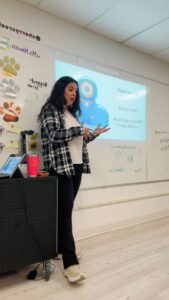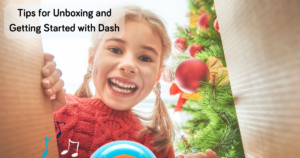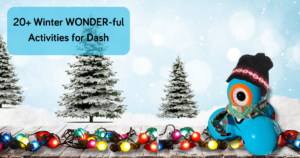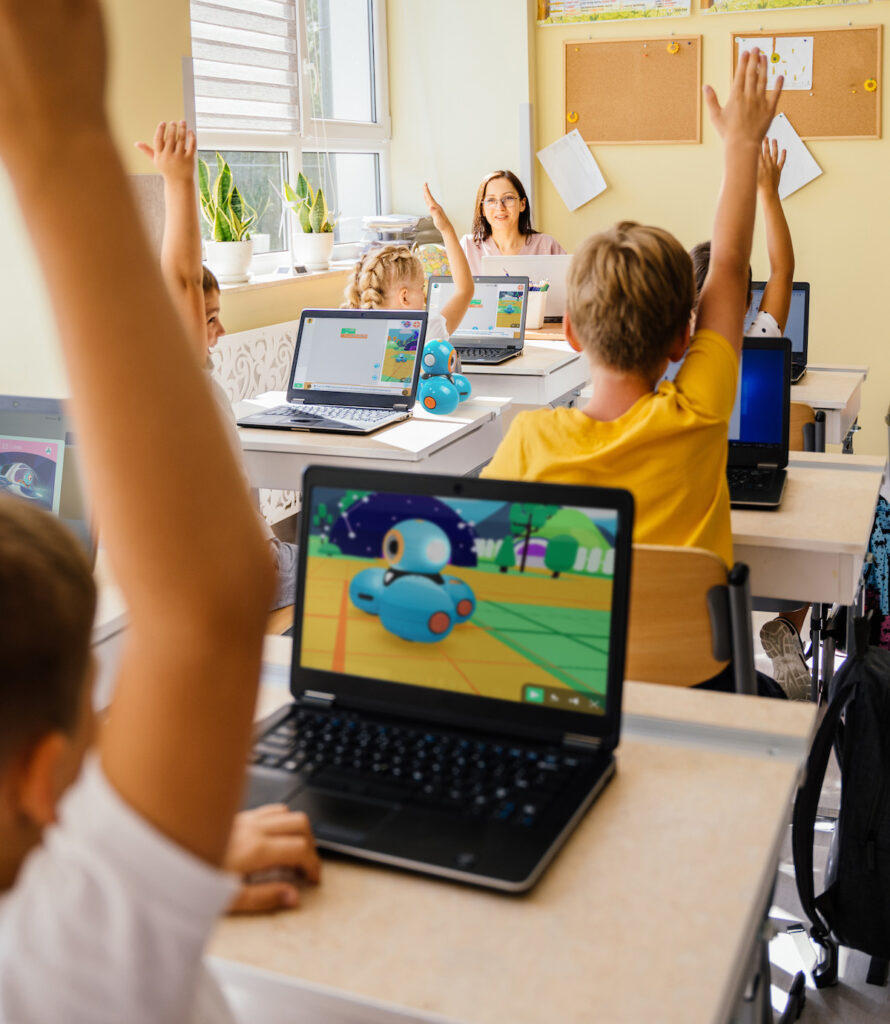Innovation Starts Early
The earlier that students dive into computational thinking and computer science, the more likely they’ll grow into the problem-solvers and innovators of tomorrow.
As a teacher, I know that Blockly can seem challenging for young kids, especially since it looks like it requires strong reading skills. But don’t worry—there are so many fun, hands-on strategies that can make foundational coding and problem-solving skills accessible to K-1st grade students.
A Day-by-Day Lesson Plan for Using Blockly with Pre-Readers.

We all know that hands-on resources make a huge difference, which is why I created this K-1 Intro to Blockly based on the tried-and-true strategies I’ve used with Dash in my classrooms over the years.
In the guide, you’ll find four easy-to-follow lessons packed with classroom-tested strategies, interactive slides, unplugged coding activities, and printables.
I hope these resources inspire you and your students to explore the world of coding together!
Resources for a Smooth Start
Each lesson introduces specific skills while keeping the activities interactive and tangible. The included Blockly printables and worksheets help create a structured, visually engaging learning environment.
Scavenger Hunt
A scavenger hunt with printable Blockly blocks is a great way for young learners to build familiarity with blocks as symbols that have important meanings. Before they can begin coding, it’s important that they have the opportunity to explore and engage with the materials in creative and tangible ways.
Coloring Pages
Kids can look to the colors in Blockly as clues to understand what each block means. As a class or in small groups, guide students through the Blockly coloring pages. An answer key is included for teachers to make this activity seamless.
Blockly Programs Worksheets
After learning more about Blockly blocks through the scavenger hunt and coloring pages, guide students through a exploration of the Blockly app to see how connecting the blocks makes Dash follow instructions. Use the printable Blockly programs worksheet and attached answer key for a small group unplugged coding activity. One child can act as a robot, while the other is the programmer who connects blocks that tell the robot what to do.
Even More Classroom Inspiration
Looking for more? Check out some innovative ways that teachers around the country are using Dash with their K-1 students.
In @growmakecreate‘s STEAM lab, kindergarteners coded Dash to bulldoze Lego blocks into bond diagrams to create accurate math problems!
Ms. Tavares‘s Coding Club paired first graders with student mentors to learn and code together. Student mentors guided the Grade 1 coders to code directionally in a grid as they familiarize themselves with this new digital tool. They mixed unplugged and plugged coding activities to deepen student understanding!
This hands-on, cross-curricular lesson from @kgakindercats used computer science tools to explore life science content. Watch how students programmed Dash to demonstrate the different roles that bees have in their hives.
Integrate reading and robots with this fun idea from @Goodwinnovate on Instagram. All you need are tin cans, magnetic letters, a magnet board, paper, pencils and your Dash robot.






















